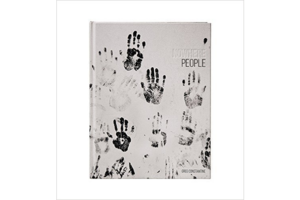'Nowhere People' profiles stateless peoples and their little-known plight
Photographer Greg Constantine's hefty 373-page book features black-and-white photos from 12 of the countries where he has worked over the years.

Nowhere People
By Greg Constantine
Nowhere People
374 pp.
In his new book Nowhere People, photographer Greg Constantine introduces us to some of the poorest, most repressed, and least known people in the world.
Constantine first began to focus on these stateless people 14 years ago, in 2002 when he was taking pictures of North Korean refugees seeking asylum in Southeast Asia. What began as a one-year project in 2005 turned into a 10-year “global exploration,” as the photographer describes it.
His hefty 373-page book features black-and-white photos from 12 of the countries where he has worked over the years – Bangladesh, Nepal, Malaysia, Myanmar, Kuwait, Iraq, Serbia, Italy, Ukraine, Kenya, the Ivory Coast, and the Dominican Republic.
I have visited seven of these countries, either as a reporter for The Christian Science Monitor or because my curiosity took me there. But I must admit that I was oblivious in every case but one to the plight of the stateless people living and working in these countries.
Constantine introduces us first to the Biharis, a Muslim minority that sided with the Pakistani Army during the India-Pakistan War of 1971. Since I covered that war for The Monitor, I was familiar with the Biharis and even spent an uneasy night with a number of them following an Indian Army ambush of a Pakistani platoon that I was with.
At the end of the war, with serious consequences for them, the Biharis were viewed by the new government of Bangladesh as collaborators of the Pakistanis. Since 1971, as Constantine explains in a brief text, more than 200,000 Baharis have been living in crumbling camps scattered throughout Bangladesh. The youths in these camps work odd jobs as day laborers or weavers. They aren’t recognized as citizens of Bangladesh and are denied basic rights.
But what immediately strikes you is that they show no bitterness. Many still hope for a future in which they can get identification cards, an education, and better jobs. And this holds largely true for the other people in the countries that Constantine surveys.
His photography offers a vivid close-up portrait of stateless people, who may number at least 10 million worldwide, according to the United Nations High Commissioner for Refugees (UNHCR).
I asked Constantine, whose work I’ve reviewed before, how he managed to get so close in with the people whom he’s photographing. He responded that he only uses fixed-length wide-angle lens (primarily a 24mm or 35mm lens). So the lenses force him to get close. He uses a Leica m6 and Nikon F100, both film cameras, and prefers to shoot in black and white, which he feels draws one more into the essence of a photo than color.
Emerging through these pictures are people who, though repressed and marginalized, are intelligent, resilient, and resourceful. They’re courageous and they persevere. Even in the country of Myanmar, where the Muslim Rohingya minority have been excluded from citizenship, are confined to camps, and have often become the victims of human trafficking, parents continually seek a better way of life for their children.
Constantine asks what can be done. His answer is that one must start by raising awareness of the issue, and that’s what he’s attempting to do.
The UNHCR is fully aware of the problem, has provided humanitarian aid to a number of the refugees, and has supported some of Constantine’s photo projects, including his book.
But much more needs to be done by the governments involved. They should begin by extending basic rights to the stateless people who have lived for many decades in their midst.

